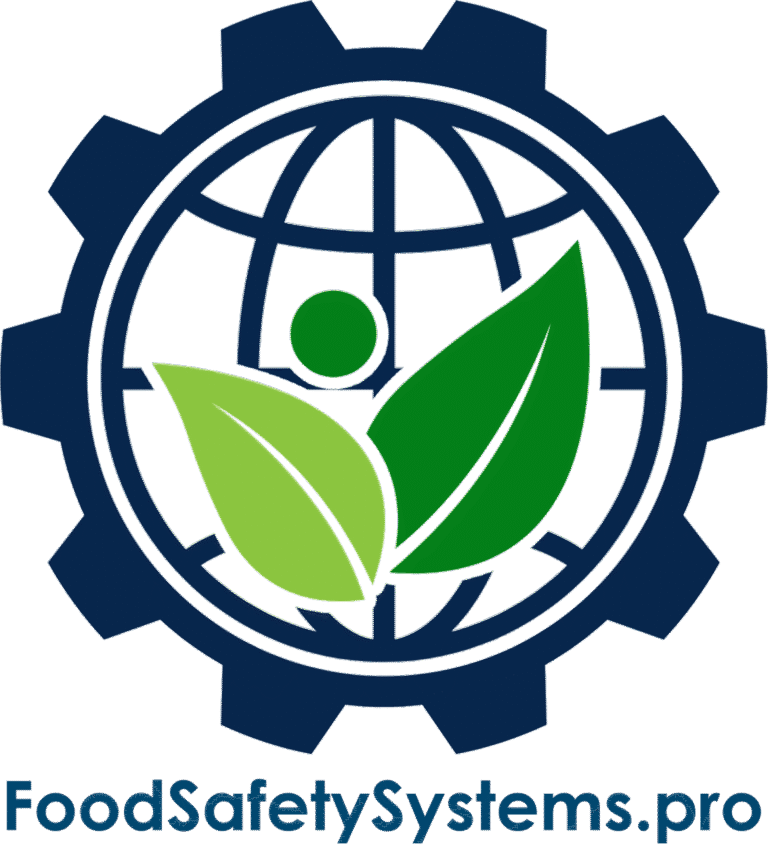Food Fraud Vulnerability Assessment
Aligned with SQF Code Edition 9 – System Element 2.8.1
Requirement Overview
SQF Code Edition 9, System Element 2.8.1, states:
“A food fraud vulnerability assessment shall be conducted to identify potential vulnerabilities for each product or group of products and implemented to identify and mitigate the risk of economically motivated adulteration (EMA).”
Food fraud—including substitution, dilution, mislabeling, and counterfeiting—poses risks to food safety, brand integrity, and consumer trust. This module requires documented systems to assess and control those risks.
Disclaimer: Food Safety Systems is not endorsed by or affiliated with the Safe Quality Food Institute (SQFI). This article is provided for educational and implementation support. For official SQF documentation, visit www.sqfi.com.

Key Compliance Objectives
-
✓ Perform a risk-based assessment of potential fraud-prone products and ingredients
✓ Identify economically motivated adulteration (EMA) threats
✓ Implement documented mitigation strategies
✓ Conduct annual reviews and updates to the vulnerability assessment
Step-by-Step Compliance Implementation
1. Build a Food Fraud Risk Profile
-
Risk Criteria to Evaluate:
-
• Country or region of ingredient origin
• Historical fraud incidents (e.g., honey, spices, oils)
• Market value and fraud incentive
• Supply chain complexity or lack of transparency
Evidence to Maintain:
-
• Food fraud risk matrix by ingredient or product group
• Ingredient classification by vulnerability score (low/medium/high)
• References to regulatory reports or historical data
- • Country or region of ingredient origin • Historical fraud incidents (e.g., honey, spices, oils) • Market value and fraud incentive • Supply chain complexity or lack of transparency
- • Food fraud risk matrix by ingredient or product group • Ingredient classification by vulnerability score (low/medium/high) • References to regulatory reports or historical data
2. Conduct a Vulnerability Assessment
-
Assessment Focus Areas:
-
• Triggers for economically motivated adulteration
• Supplier or logistics vulnerabilities
• Risk of substitution or dilution
Evidence to Maintain:
-
• Completed vulnerability assessment report
• Scoring logic and documented rationale
• List of ingredients/products reviewed and categorized
- • Triggers for economically motivated adulteration • Supplier or logistics vulnerabilities • Risk of substitution or dilution
- • Completed vulnerability assessment report • Scoring logic and documented rationale • List of ingredients/products reviewed and categorized
3. Establish Mitigation Strategies
-
Examples of Mitigation Controls:
-
• Use of only approved and audited suppliers
• Routine verification of Certificates of Analysis (COAs)
• Targeted testing for high-risk ingredients (e.g., DNA testing, FTIR)
• Authenticity documents (e.g., certificate of origin, testing history)
Evidence to Maintain:
-
• Documented mitigation strategies per risk category
• COA verification logs and product test records
• Supplier performance and traceability documentation
- • Use of only approved and audited suppliers • Routine verification of Certificates of Analysis (COAs) • Targeted testing for high-risk ingredients (e.g., DNA testing, FTIR) • Authenticity documents (e.g., certificate of origin, testing history)
- • Documented mitigation strategies per risk category • COA verification logs and product test records • Supplier performance and traceability documentation
4. Review and Update Annually
-
Annual Review Triggers:
-
• Introduction of new suppliers or ingredients
• Market alerts or new regulatory incidents
• Significant product formulation or sourcing changes
Evidence to Maintain:
-
• Annual review summary and documented updates
• Meeting records or verification reports
• Action items arising from updated risk evaluations
- • Introduction of new suppliers or ingredients • Market alerts or new regulatory incidents • Significant product formulation or sourcing changes
- • Annual review summary and documented updates • Meeting records or verification reports • Action items arising from updated risk evaluations
Common Audit Findings & Recommended Fixes
Audit Finding
Recommended Action
No documented food fraud assessment
Create and document a vulnerability matrix
Outdated risk assessments
Schedule annual reviews and establish alert feeds
No mitigation strategies in place
Implement tiered controls based on risk level
COAs not verified or documented
Establish COA check log and verification routine
| Audit Finding | Recommended Action |
|---|---|
| No documented food fraud assessment | Create and document a vulnerability matrix |
| Outdated risk assessments | Schedule annual reviews and establish alert feeds |
| No mitigation strategies in place | Implement tiered controls based on risk level |
| COAs not verified or documented | Establish COA check log and verification routine |
Auditor Verification Checklist
During an SQF audit, be prepared to show:
-
• Your latest food fraud vulnerability assessment
• Ingredient-specific risk scores with justification
• Mitigation strategy documentation and COA checks
• Records of annual updates and relevant market alerts
Implementation Roadmap
Build Your Program
-
✓ Develop an ingredient-based food fraud matrix
✓ Score items based on sourcing and economic risk
Train and Validate
-
✓ Complete formal vulnerability assessments
✓ Train procurement and QA staff on red flag detection
Operate and Monitor
-
✓ Monitor supplier certifications and COA submission
✓ Review external fraud alerts or market updates
Improve Continuously
-
✓ Reassess product risk levels annually
✓ Adjust strategies based on emerging threats or incidents
Why This Matters?
A proactive food fraud program:
-
✓ Protects public health and brand reputation
✓ Ensures transparency across global supply chains
✓ Fulfills certification and buyer requirements
✓ Deters intentional adulteration through ongoing monitoring
Need Support Building or Reviewing Your Food Fraud Program?
Food Safety Systems provides:
-
✓ Editable vulnerability matrix templates
✓ Food fraud SOPs and annual review checklists
✓ COA verification logs and red flag detection guides
✓ Staff training modules on food fraud awareness
Privacy Policy | Terms of Service | Disclaimer
Powered by Consultare Inc. Group, A Compliance Company







